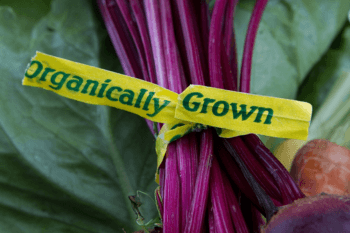Where Does Our Food Come From?

The massive shift in U.S. food production eastward to low-cost countries such as China over the last 20 years has resulted in a vast and complex supply chain that has the potential to endanger the health of American consumers, according to a world-renowned expert whose presence at Texas A&M University is part of a prestigious scholarly initiative.
Aleda Roth, the Burlington Industries Distinguished Professor in Supply Chain Management at Clemson University, is visiting Texas A&M as a Faculty Fellow of the Texas A&M University Institute for Advanced Study (TIAS), a program that attracts eminent scholars from around the world to study, teach and conduct research alongside Aggie students and faculty.
Roth’s six-year investigation of global food supply chains has resulted in revelations that may surprise and alarm most American consumers.
“Almost a quarter of the average American’s food consumption is imported,” Roth says. “Consumers would be hard pressed to find processed foods without at least one ingredient from China.”
And while U.S. production companies may be able to cut costs by using food and ingredients from emerging market countries such as China, the potential liability is great, says Roth, because hygiene factors, worker safety, environmental practices, quality processes, treatment of animals, and regulations are known to be highly substandard as compared to Western norms.
Roth says her investigation was first inspired in 2006 when her dog was sickened by tainted pet food, an event that spawned the recall of hundreds of brands of pet food and was credited for the deaths and sickening of thousands of dogs and cats. “Worse yet, as the list of recalled products grew day by day, it was months—and hundreds of products later—before the FDA traced the root cause to unscrupulous Chinese suppliers,” says Roth. The source of the contamination turned out to be melamine, a compound used in making plastics, which tainted wheat and rice gluten in the pet food and was also found in milk and infant formula produced in China and imported to the U.S.
And what about the more expensive “organic” food items, such as produce, many consumers are buying under the assumption such foods are grown locally and/or are the result healthy farming methods? Roth’s investigation reveals many foods labeled “organic” are sourced from abroad, increasingly, China. “In 2008, ABC News reported that many of Whole Foods branded organic frozen fruits and vegetables, including its ‘California Blend’ were actually from China,” she states.
Seafood is another potential hazard for American consumers, Roth contends, citing a 2010 USDA report that found over one-quarter of the seafood Americans consume is from China, including tilapia, shrimp and cod.
Adding to the list of Chinese imports are frozen and canned fruits and vegetables, including 20 percent of frozen spinach, along with candy, spices and a plethora of ingredients. “China also has a virtual monopoly as a supplier of vitamins, food supplements and many ingredients in pharmaceuticals,” Roth adds.
She says some U.S. poultry companies raise and slaughter chickens in the U.S., then freeze and send the carcasses to China where they are processed, packaged and shipped back to the States for consumption.
“While the Chinese food processing plants are supposed to operate with the same standards as their U.S. counterparts, U.S. regulators are ill-equipped to manage the complexity of the global supply web and cannot guarantee exactly what is coming back,” Roth states. “And when food enters our ports, less than two percent is inspected, and of these, tests are for biological contaminants; there is no routine checking for heavy metals or nonorganic toxins.”
Roth contends that long food supply chains are frequently comprised of a complex web of suppliers, manufacturers, distributors, retailers and wholesalers, so they often lack traceability to the source of ingredients. “That, combined with little transparency of documentation and a highly fragmented infrastructure of policies and regulators within and across countries, opens the door to deception and opportunistic behaviors among the supply chain players, which only heightens the potential risks to consumers,” she explains.
She adds that savvy suppliers sometimes trans-ship products through other countries, such as the Netherlands and Mexico, to evade detection of China as a source.
Roth contends that in order to protect the health of consumers, top management at U.S. food production companies must be proactively engaged in “deep supplier monitoring to the source, supplier development, environmental scanning, as well as building flexibility and resilience through proper adoption and implementation of strategies and processes.”
With so few controls on pollution, she adds, much of China’s air, water and soil are so contaminated, sourcing any food there is risky business. “The current solutions to food quality are not sustainable. Quality risk in global food supply chains cannot be eliminated by fiats, inspections, auditing and testing.”
“Rethinking our supply chain designs using ecological design principles—for both food and production—are a way forward. Our health and national security may depend on it,” she concludes.
The Texas A&M Institute for Advanced Study (TIAS) is in its second year. Its first two classes include four recipients of the highest honors for scholarship: two Nobel Prize winners, a National Medal of Science winner, and a Wolf Prize recipient, as well as many national and international academy members and top literary scholars. Like Aleda Roth, all of the TIAS Faculty Fellows are collaborating with Texas A&M faculty and graduate students to solve important world problems. Visit tias.tamu.edu for more information.
Media contact: Lesley Henton, Texas A&M Division of Marketing & Communications.





